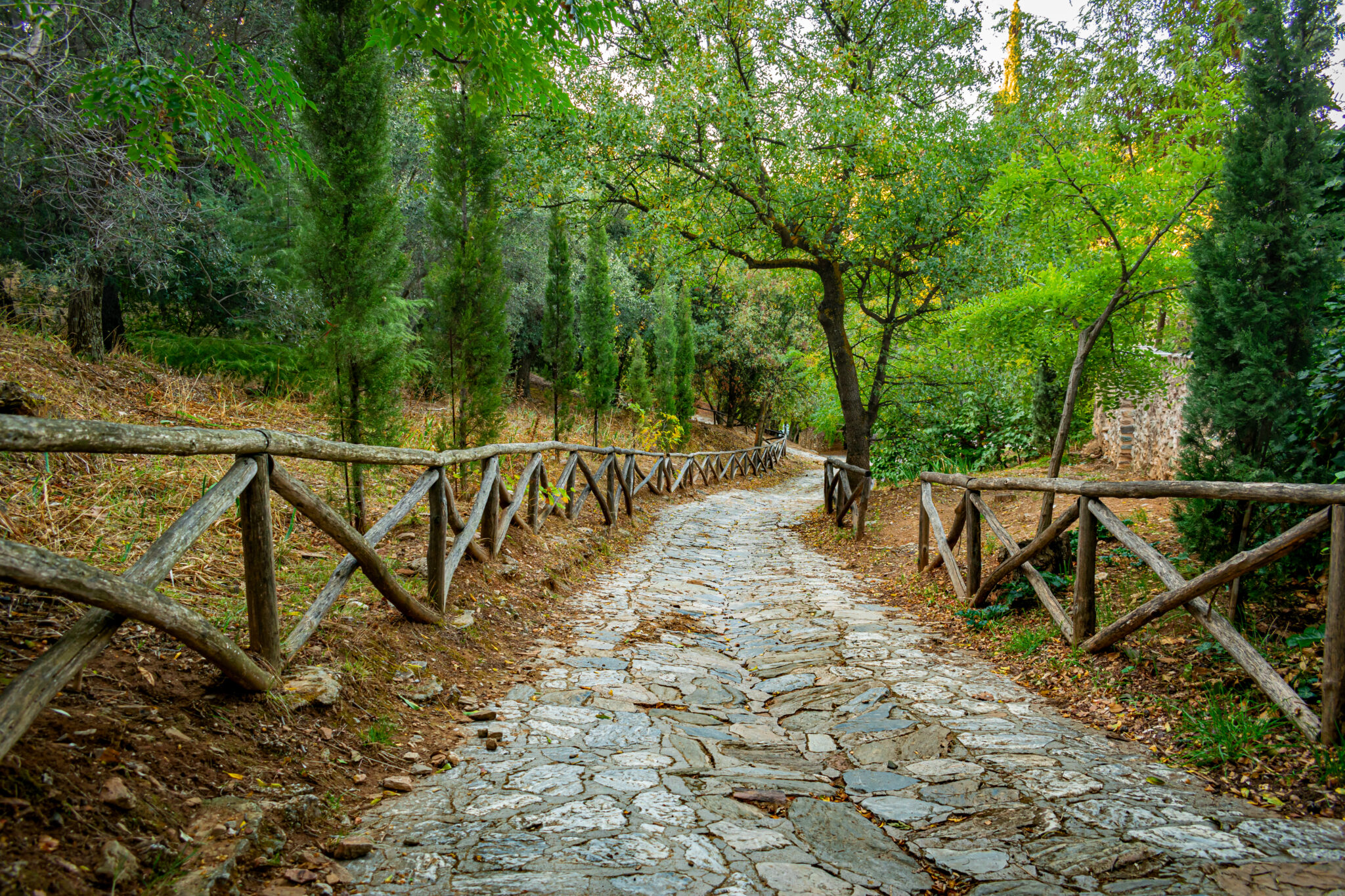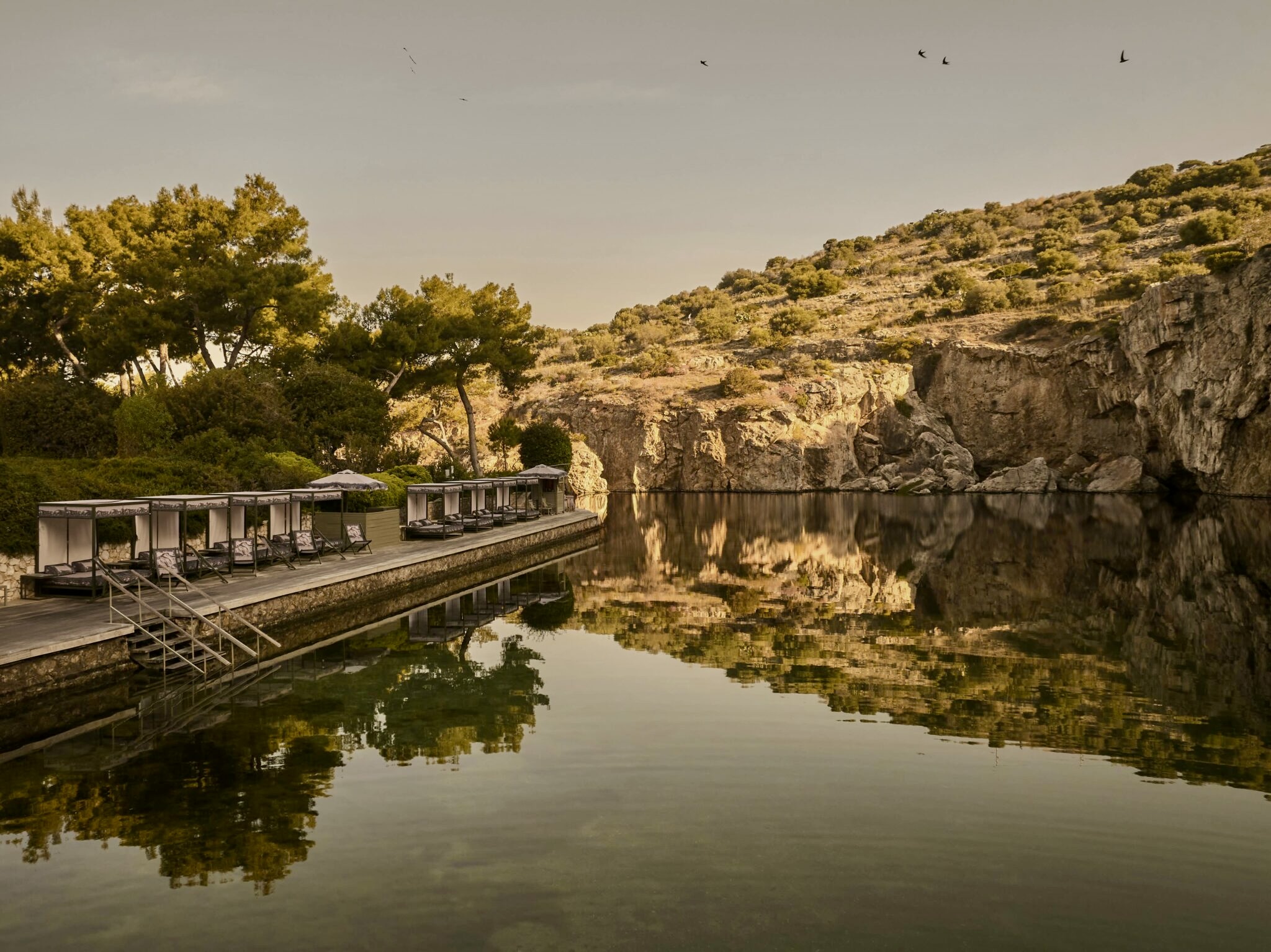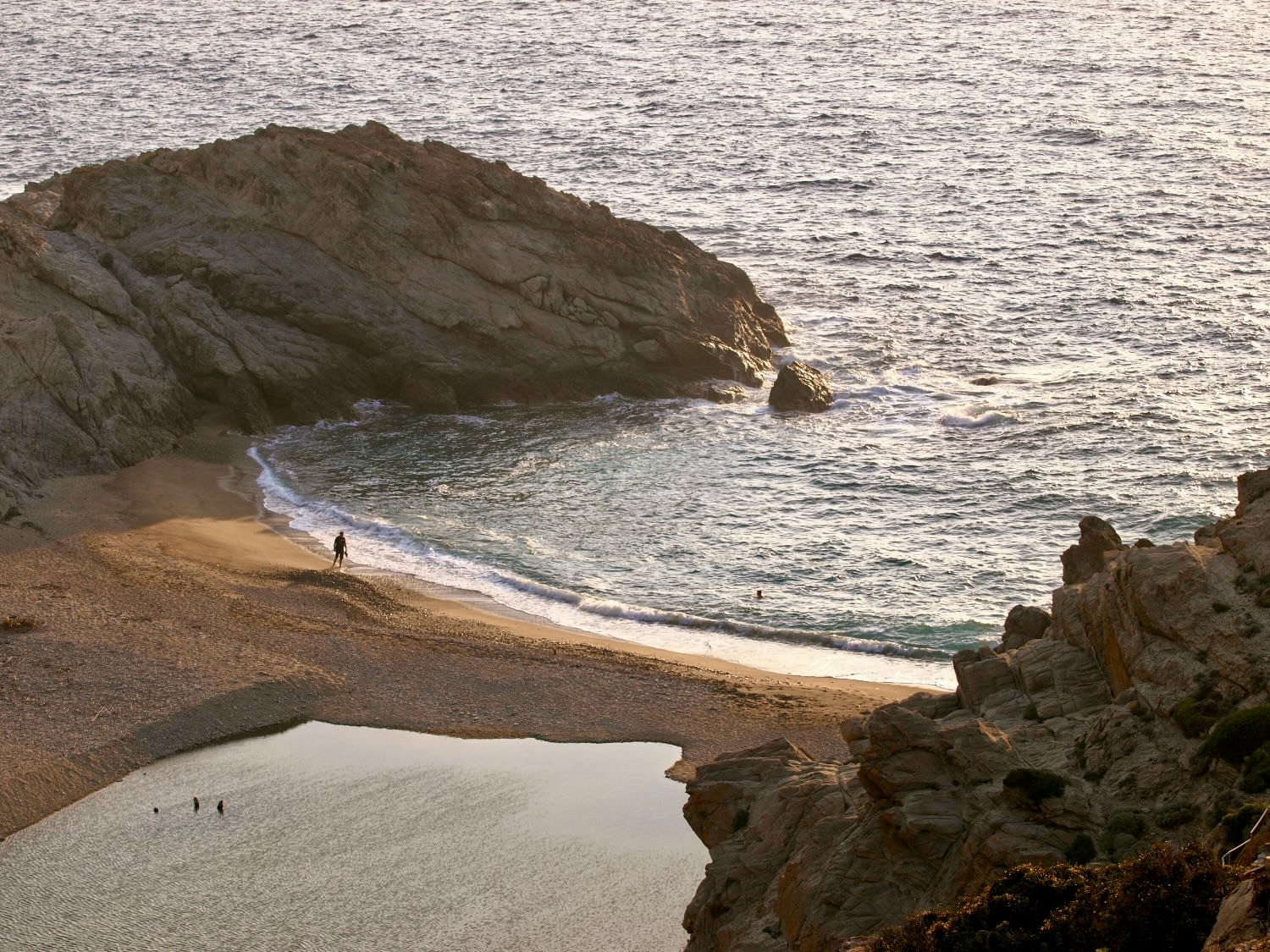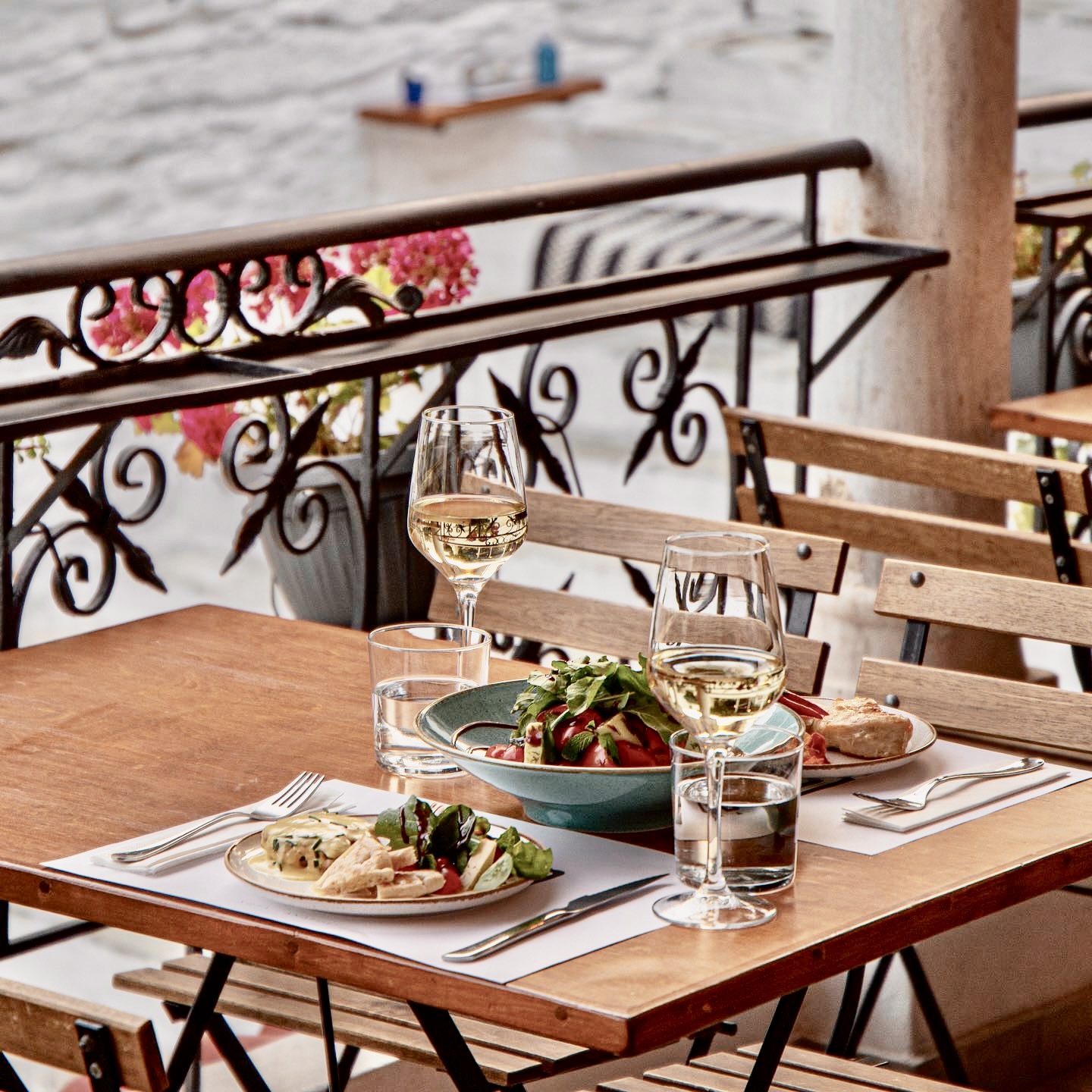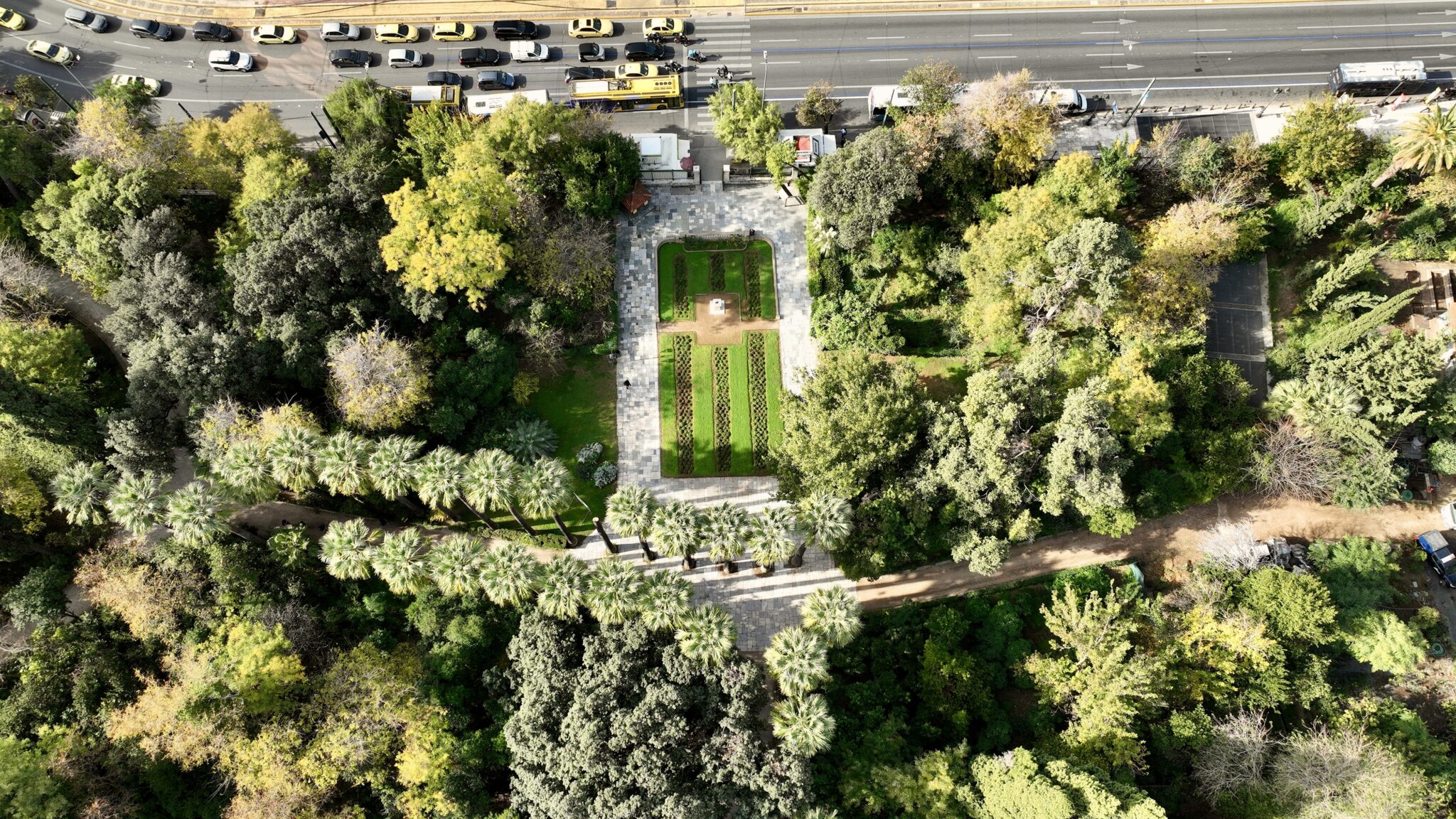Attica, a region with historic and cultural interest, also offers some less known pleasures that can provide carefree moments of relaxation to the whole family.
The blooming parks and lush forests of the region include lovely, secluded paths that are ideal for bike or roller rides, while their lakes are a great destination if you want your children to become acquainted with the rare flora of Greece.
In a time when seclusion seems like a default request, the wooded areas near Athens, that are protected from overcrowding, are bound to become Attica’s hot spots, the perfect places to enjoy a long walk filled with adventure and games that will keep your children busy for hours.
We picked 5 of the most beautiful parks or forests around Attica where you can go on a family excursion and where you’ll certainly not get bored.
Aesthetic forest of Hymettus (Kaisariani Forest)
It is called “Hymettus’ balcony” due to its unique view of the whole of Athens. The Kaisariani forest is just 10 minutes away from the centre of Athens, but as soon as you get there you’ll feel that you have escaped to a mountainous destination far away from the city.
Green stretches, wooden bridges, running water, and gorgeous nature welcome visitors who arrive from all over Attica to feel the joy of a short, fun, “excursion” in the heart of Athens.
In the afternoon, during the week, this large park is quite quiet with only a few people walking in this wooded area, with the ancient natural spring of Kalopoula, next to which you’ll find the local canteen, an oasis of relaxation just 6.5 km from Syntagma square.
Apart from getting a cup of coffee to go, you can sit on the comfortable wooden picnic tables and enjoy meze, wine and beer. You’ll truly feel like you’re in the main square of a village in the countryside. The blackboard in front of the canteen is updated daily with the specials that don’t cost more than €6: fluffy meatballs, pies, gigantes beans, spetzofai (traditional dish from Pelion, prepared with sausage and peppers in tomato sauce), as well as delicious cheese saganaki (traditional way of preparing a dish in a small frying pan using tomato sauce, often spicy – or grilled) make for a complete meal, while you rest from exploring the forest. The Kalopoula canteen is open daily between 7.30-17.00 in the winter, and between 7.30-19.00 in the summer.
Close by, the Kaisariani monastery, a great example of the lovely Byzantine architecture, stands out among the green due to its beauty and history. The monastery was built in the end of the 11th century and is dedicated to the Entry of the Most Holy Theotokos into the Temple, while it stopped operating in 1833. Coming from the centre of Athens, you’ll head up towards the Kaisariani cemetery and after you pass by the Ethnikos Asteras football club and Ethnikis Antistaseos avenue, you’ll come across a turn that leads to Attiki Odos motorway. Continue straight and keep on the right of the road that leads to the monastery.
The Kaisariani Forest has been declared a “Historic Garden of Europe” by the European Union and is kept and cared for by the Philodassiki Society.
Syngrou Estate
In the northern suburbs of Attica, very close to Kifissia, one of the few large green spaces you’ll find so close to the centre of Athens, offers a wide range of activities for the whole family.
The Syngrou Estate (also known as Syngrou Forest and Syngrou Park) is a gorgeous wooded area ideal for those who want to enjoy a stroll in nature without having to drive for long and without running the risk of being in an overcrowded place. To get to Syngrou Park head towards Kifissia on Kifissias avenue and when you reach the KAT hospital, cross the park’s main gate. There is free parking available, while the park is open to the public from early in the morning until sunset, as there is no lighting to allow strolls during the night.
Full of beautiful paths, Syngrou Estate is ideal for hiking, as well as for bike rides while the children will love going on the green circular paths with their scooters. However, the park authorities ask visitors to stay strictly on the available paths and not make their own, as it has been proven that cycling has affected a great number of the park’s flora.
In the park, you’ll have the chance to see the Agios Andreas chapel, the only Christian Orthodox church in Greece to be built in the gothic style, a work by Ernst Ziller, as well as the beautiful cacti and succulent botanical collection in the Estate’s greenhouses. The collection of about 300 arboretum succulents from north and south America and Africa stands out.
A stop at the small ancient theatre that’s located within the forest is a must, as well as at the two lakes where you’ll see gorgeous goldfish in various colours. Finally, for the honey lovers, the Beekeeping museum is very interesting, since it the only museum in Greece with such rare beehives from all over Greece.
The Antonis Tritsis Park
The largest metropolitan park in Athens, the Antonis Tritsis park, is located in the west suburbs of Attica, covering around 120 hectares, with water having a leading role. Six artificial lakes surrounded by verdant vegetation unite in a large artificial channel that ensures the constant flow of water between the lakes and also the recycling of the waters. At the same time, the park’s rich flora and fauna make it a unique destination that will make you feel as if you were in the heart of a wild, natural landscape, outside the city borders.
The area around the Tritsis Park has a long history that starts in 1833, just a few years after the Greek independence. At that time, many Turkish estates in Attica were bought by wealthy Greek and foreign landowners, including Ioannis Papatheodorou Lefakis from Andros. The Lefakis estate, around 30 hectares, was in the Dragoumanos neighbourhood, at today’s location Pyrgos Vasilissis (Queen’s Tower). Later on, Ioannis Lefakis sold the land to two English businessmen who were interested in investing in the newly formed Greek state. They were the ones to plant the vines and the fruit-bearing trees, build facilities and landscape the gardens that Queen Amalia fell in love with during one of her strolls, and so, she went on to buy the land, planning to expand and landscape it according to her own taste. Between 1848 and 1861, 47 more estates in the surrounding area were bought, creating a huge park of 250 hectares.
Thousands fruit-bearing trees were planted on the farm, 3,700 mulberries, hectares of pistachio trees, around 18 hectares of vines, thousands of olive trees, rare varieties of ornamental plants from abroad. Large parts of the land were farmed, growing cotton, corn, clover, oats, briza, potatoes, broad beans, beans. In Amalia’s care 40 cows were bought from England, Switzerland and Oldenburg, birds from India and Africa, merino sheep, piglets, Arabic horses. It’s also said that the queen brought giraffes to the farm.
During your stroll around the Tritsi Metropolitan Park you’ll come across the church of Apostolos or Agios Pavlos that is on the western part of the park, a church that was constructed between 1958 and 1960 by architect Athanasios Koutsogiannis in collaboration with Dimitris and Petros Pikionis. At this time, at lake number 5, you can go on a Christmas boat ride, daily from 13.00 to 16.00 and from 10.00 to 16.00 on the weekends, while you can also ride the Christmas train at the park, two activities children will love.
Schinias National Park
On the Marathon valley, about 40 km from Athens, you’ll meet the most important coastal ecosystem in the whole of Attica, a place with a fragile aquatic balance that will engage children and make them interested in the environment, igniting a love for the land’s flora and fauna.
Stretching 138,400 hectares (including the sea area) the Schinias national park consists of the forest of Koukounaria (one of the few remaining in Greece), the Mega Elos, the Kinosura peninsula (a Mediterranean ecosystem of great natural beauty with shrubs and grass), the coastal and the marine zone. Here you can enjoy the magic of a large wetland that attracts thousands of visitors each year, and is great for rare birdwatching, and for relaxing in nature.
The area around the Marathon lake is historically known due to the Battle of Marathon, while you can also see the location of the Persian army camp, as well as the Monument (trophy) of the Battle that was built near Mega Elos. Researchers believe that that is the location where the Greek armies gathered before the fight. Some claim that the monument was erected as a symbol of the Athenians’ victory, while others that it is the site of the mass tomb of thousands of Persians who fell in battle.
The park is part of the Natura 2000 network and hosts 19 habitats, 115 bird species, while endangered freshwater fish, amphibians and reptiles live in its waters. Make sure you stop at Makaria Pigi, the spring between the two lakes. Eels, turtles and the endangered endemic fish Pseudophoxinus stymphalicus marathonicus can be found there. Admire the wetlands with the fresh, brackish and saltwater surrounded by reeds, tamarisk trees and lush vegetation and wet valleys. Rare fowl nest in the area, while in the lowest part, in lake Stomi, you can also see many endangered aquatic birds like Phoenicopterus ruber, Falco naumanni and Himantopus himantopus. A truly educational, valuable experience for young and old a stone’s throw from Athens.
Lake Beletsi
Located on the eastern slope of mount Parnitha, at an altitude of about 600 m, a beautiful, secret place will satisfy even the most demanding people in search of a short break near Athens.
Lake Beletsi, also known as Lake Kithara (guitar in Greek) due to its shape, is on the borders of the Ippokratios Politia quarter, and is ideal for a lovely stroll in nature, offering moments of pure calm and peace. To get there all you have to do is to go on the Athens-Lamia national road and turn left at the Afidnes Junction. After you cross Agia Triadas street, through the quarter, you’ll have arrived to your magical destination.
If you’re feeling the need to completely decompress from your daily routine, just take your book and sit on the lake’s banks, looking at the birds, the geese and the swans in the lake. Or if you like cycling, here you’ll find beautiful paths to ride for hours.
There is a specially designed area for having a picnic, with tables and benches, but bring your supplies with you, since there aren’t any canteens in the area. You’ll also find organised playgrounds for endless playing near the artificial lake that was created between 1973 and 1975, as a water reserve for constructions in the area, and also as a future aquatic habitat.
At the nearby settlement Sfendali, next to the stone-built train station, you’ll find the traditional tavern Mathios, if you want to have a meal as you watch the trains pass by.



